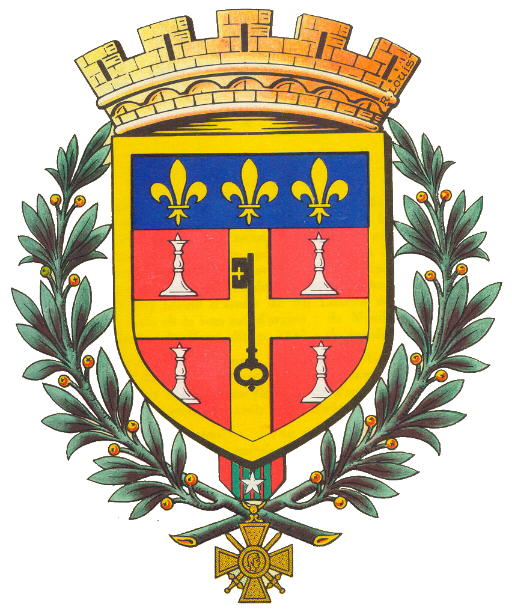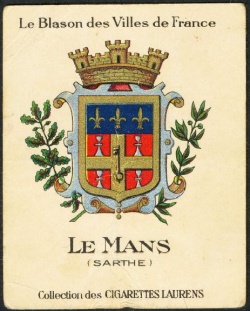Le Mans: Difference between revisions
Jump to navigation
Jump to search
Knorrepoes (talk | contribs) m (Text replacement - "lau.jpg|250 px|center]] <br/>The arms" to "lau.jpg|250 px|center|Blason de {{PAGENAME}}]] <br/>The arms") |
Knorrepoes (talk | contribs) m (Text replacement - ".jpg|center]]" to ".jpg|center|Blason de {{PAGENAME}}]]") |
||
| Line 4: | Line 4: | ||
Département : [[Sarthe]] | Département : [[Sarthe]] | ||
[[File:mans.jpg|center]] | [[File:mans.jpg|center|Blason de {{PAGENAME}}]] | ||
====Origin/meaning==== | ====Origin/meaning==== | ||
The chandeliers refer to a legend about a miracle that occurred at the funerals of Saint Julian, first bishop of Le Mans (in the 3rd century AD), in which three ever-burning candles were involved. The oldest arms of Le Mans showed only the candles. | The chandeliers refer to a legend about a miracle that occurred at the funerals of Saint Julian, first bishop of Le Mans (in the 3rd century AD), in which three ever-burning candles were involved. The oldest arms of Le Mans showed only the candles. | ||
Revision as of 17:52, 29 October 2016
Template:France LE MANS
Département : Sarthe
Origin/meaning
The chandeliers refer to a legend about a miracle that occurred at the funerals of Saint Julian, first bishop of Le Mans (in the 3rd century AD), in which three ever-burning candles were involved. The oldest arms of Le Mans showed only the candles.
Le Mans became a free city in the 11th century which is represented by the key. The chief of France indicates that the Le Mans was a Royal city, with the honour of having its mayor represented at the coronation ceremony of the French Kings.
| The arms in the Café Sanka album +/- 1932 |
The arms on a tobacco card by Laurens |
Contact and Support
Partners:
Your logo here ?
Contact us
© since 1995, Heraldry of the World, Ralf Hartemink 
Index of the site
Literature : Cordonnier et al, 1962












